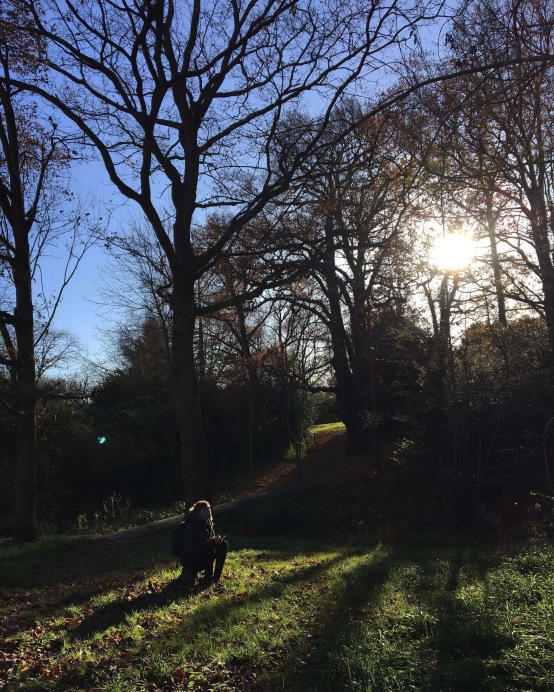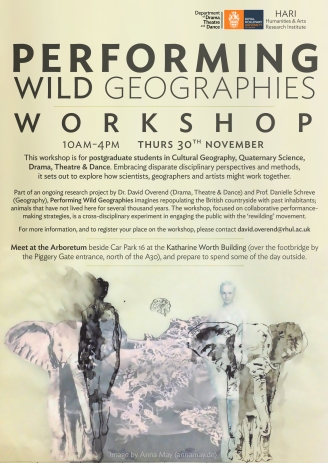At the end of last term, I had the privilege of being involved in a workshop on performing wild geographies, an ongoing project with the Geography and Drama departments at RHUL. It’s no secret that geography is a heavily interdisciplinary subject, covering everything from quaternary science, to artistic practice, to international development, and that was exactly what the workshop was about. Exploring how scientists, geographers and artists might work together, the project attempts to imagine the repopulation of nature with its previous inhabitants.

The first thing we were asked to do that day was to choose a specific tree and listen to it, writing down everything we hear the tree say, zoning out everything else around us. Personally I found this really hard, and found that my journal entries ended up being about the sounds I imagined such as the branches at the top of the tree hitting each other, and even ended up discussing intensity of the silence of the tree; there were moments of silence that felt stronger than others, as such. Afterwards we were asked to produce a series of performances – some individual, some in groups. It was really interesting to see how much everyone’s performances differed. Some were extremely chaotic and high energy, whereas others were delicately, precisely choreographed movements.
Reflecting on these activities has made me think a lot about the ways in which we make sense of nature, and nature’s voice. But more so about how we force certain narratives into the scenarios. The question in my mind is “how do we give nature a voice when it is unable to speak, and what is this voice saying?” If you were to ask about the voice of nature, how many people would think of David Attenborough’s dulcet narrations of natural phenomena? I know I’m guilty of this. However, watching everybody’s performances in the workshop made me realise that we all have individual voices to give nature, and upon reflection I’ve begun to understand that the way in which this project aims to impact the way publics engage with wildlife and wilderness isn’t necessarily through listening directly to nature, but through listening to the hybrid interpretations of scientists, artists and geographers. Previously I’d made assumptions that giving nature a voice was always a negative and bias act, but this workshop helped me realise that through giving nature these multiple, hybrid voices we make interaction with the wilderness more of a publicly accessible act.

The more voices that nature has, the more likely that somebody else will be able to relate, and this is much like a snowball effect whereby changing engagements with nature will continue at an exponential rate. This project is a great way of triggering this snowball effect, and if you get an opportunity to be involved then definitely don’t pass it up. At first, I must admit, I was sceptical about the project. But through participating I began to understand the ways in which performance making as a research method can offer a lot in terms of social influence.
If you’d like to find out more about the project, make sure to have a browse of the Performing Wild Geographies RHUL page!
